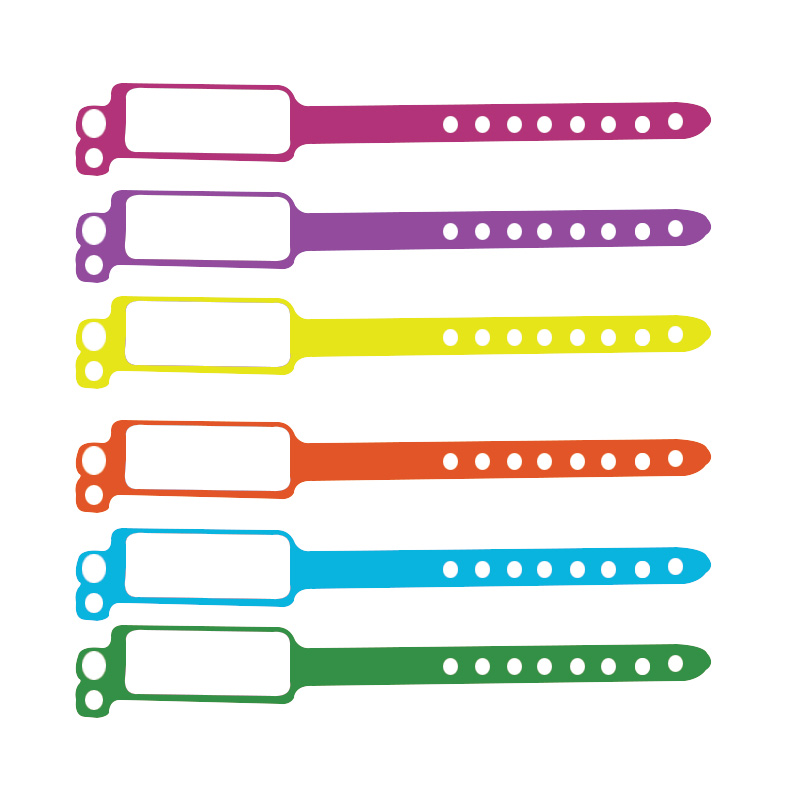The Function of Patient Identification Band in Optimizing Hospital Operations
The Function of Patient Identification Band in Optimizing Hospital Operations
Blog Article
Discovering the Various Kinds Of Patient Identification Band Used in Clinical Facilities
In the detailed globe of health care, the crucial duty of Patient Identification bands typically goes undetected. These bands, varying from easy paper wristbands to advanced RFID bands, develop the backbone of Patient safety methods, guaranteeing accuracy in Patient Identification.
Understanding the Relevance of Patient Identification Bands
While they may appear like simple accessories, Patient Identification bands play a vital function in clinical facilities. These bands function as a crucial device for verifying Patient identity, stopping clinical mistakes connected to misidentification. The bands typically display vital info such as the Patient's name, age, blood type, and any type of known allergies. They enable healthcare professionals to quickly access this essential details, consequently assisting in exact and punctual medical treatment. Patient Identification bands likewise help in improving management jobs, guaranteeing precise record-keeping and billing. Regardless of their simplicity, these bands embody the concept of Patient safety and security, a cornerstone of top quality health and wellness care. Without them, the threat of medical errors, and as a result, Patient injury, may dramatically raise.
Conventional Paper Wristbands: Their Use and Limitations
Typical paper wristbands have been a staple in Patient Identification across various medical facilities. While their use prevails, they nurture certain restrictions that may affect their efficiency in Patient administration. This section will concentrate on the scope of their application and the inherent drawbacks linked with their usage.
Paper Wristbands: Usage Range
In the world of Patient Identification, paper wristbands have long held an important duty. These bands are generally made use of in outpatient settings, where the Patient's stay is momentary. In spite of innovations in technology, the humble paper wristband stays a trusted and cost-effective remedy for Patient Identification in various health care scenarios.
Limitations of Paper Wristbands
In spite of their extensive usage, paper wristbands are not without their drawbacks. In enhancement, paper wristbands typically lack the technological capabilities of more contemporary options, such as barcoding or RFID chips, restricting their performance to merely presenting written details. Paper wristbands can create pain or skin irritability to some people, particularly when used for extended durations.
Barcoded Wristbands: Innovations in Patient Identification
While Patient Identification has long been a critical aspect of healthcare, the development of barcoded wristbands signifies a considerable leap forward. These bands take advantage of the simpleness of barcoding innovation, allowing for Patient details to be promptly checked and accessed. They improve the speed and accuracy of Patient Identification, reducing the danger of clinical mistakes related to misidentification.
Superhigh Frequency Identification (RFID) Bands: an Action Towards Futuristic Medical Care
The development of Patient Identification bands has actually caused the emergence of Superhigh frequency Identification (RFID) Bands (patient identification band). These cutting-edge gadgets existing key advantages for healthcare centers, using an extra efficient and technically advanced ways of Patient Identification. The execution of RFID in medical care is a considerable action in the direction of an extra futuristic method to Patient administration and safety
Comprehending RFID Bands

RFID Bands: Trick Benefits
Primarily, these bands enhance Patient safety by providing precise, instant Identification, therefore minimizing medical errors. RFID bands can store a huge quantity of Patient data, consisting of medical background and allergic reactions, allowing customized treatment. In general, RFID bands stand for a significant innovation in Patient Identification modern technology, profiting both clients and healthcare carriers.
Implementing RFID in Health Care
These bands offer a seamless method to track and recognize clients, ensuring their security and enhancing effectiveness in therapy procedures. RFID bands reduce clinical mistakes by providing precise Patient Identification, which is essential in stopping misdiagnosis or wrong medication management. Therefore, the implementation of RFID bands is a considerable action in the direction of improving Patient safety and security and health care delivery.

Color-Coded Wristbands: Helping in Quick and Accurate Diagnosis
In the busy setting of a clinical center, color-coded wristbands have actually arised as vital devices for swift and precise Identification of a patient's medical condition. These wristbands, put on by clients, carry certain shades check this that correspond to different clinical conditions or standings. For circumstances, red might suggest allergy dangers, while yellow may represent a fall threat. This system is made to offer instant visual hints to doctor, enhancing Patient safety and security and care top quality. In emergency situation scenarios, using these wristbands allows for rapid decision-making. Nevertheless, the efficiency of color-coded wristbands depends upon the uniformity of shade interpretation throughout health care institutions, requiring common criteria for constant application.
Strategies for Reliable Implementation and Monitoring of Patient ID Bands
Achieving optimal usage of Patient Identification bands requires a well-structured technique for their execution and administration. Patient education is additionally critical; people must comprehend the objective of the bands and the demand for their constant wear. It's essential to have a back-up strategy in location, such as barcode scanning or biometrics, to make certain that Patient Identification is never jeopardized.
Verdict
Patient Identification bands are critical in medical facilities to make sure security and precision. Effective implementation and management of these bands can substantially reduce medical errors, boost efficiency, and enhance general Patient treatment.
These learn this here now bands, differing from straightforward paper wristbands to sophisticated RFID bands, form the foundation of Patient security methods, making certain accuracy in Patient Identification.The development of Patient Identification bands has brought about the emergence of Radio Regularity Identification (RFID) Bands. On the whole, RFID bands represent a substantial development in Patient Identification technology, benefiting both patients and healthcare providers.
RFID bands reduce medical mistakes by offering accurate Patient Identification, which is critical in preventing misdiagnosis or wrong medication management. Patient education and learning is likewise essential; people should understand the objective of the bands and the need for their constant wear.
Report this page